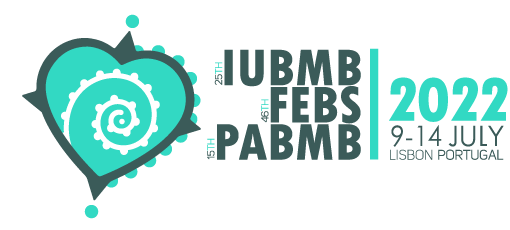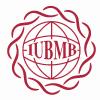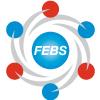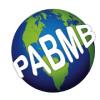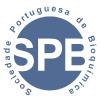
Call for Abstracts
Update 23 March 2022: The Call for Abstracts presented on this webpage is closed. Notifications on abstract outcomes are expected to be sent on 7-8 April 2022. The text below is retained for reference.
If you missed the earlier March deadline for abstract submission to The Biochemistry Global Summit or are interested in presenting an additional abstract at the event in a different track, please now see the Late-breaking abstracts webpage.
Present your work at The Biochemistry Global Summit
The Congress organizers are pleased to invite you to submit an abstract for consideration for The Biochemistry Global Summit (the IUBMB–FEBS–PABMB Congress 2022). Abstracts must be submitted via the online participant portal, before March 10, 2022. Abstract topics can be seen here.
Submitted research abstracts can be considered for oral presentations as ‘Short Talks’ in the Symposia and for poster presentations. Posters will be organized by topic, and opportunities for presenters to discuss their work with interested participants will be provided by designated poster sessions in the Congress schedule. FEBS Press Poster Prizes will be awarded during the event.
Accepted abstracts will be displayed on the Congress website and app, and collated in an online supplement of FEBS Open Bio. Abstracts appearing in the FEBS Open Bio supplement will be included individually in the Conference Proceedings Citation Index published by Web of Science.
Important points
Research abstracts
- Abstracts must be submitted in English.
- Abstracts must report new or recent substantive scientific results in the molecular life sciences from the lab(s) of the author(s).
- At least some findings unpublished at the time of abstract submission should be included. Where previously published results are also presented as part of the main findings (rather than only for context), this should be work published no more than 18 months before the March 10, 2022 abstract submission deadline (i.e. September 10, 2020). Any prior publication should be cited in the abstract (see Step-by-Step Guide below).
- The presenting author of the abstract must complete registration by March 10, 2022 for abstracts to be assessed and included in the Congress Programme and the FEBS Open Bio Congress supplement.
- Each registrant can submit only one research abstract for evaluation.
- The same abstract cannot be submitted by different delegates.
- Abstracts are also invited on 'Molecular Life Sciences Education'. These should preferably report research findings on aspects of teaching/learning, but other original contributions to current topics in education and career development are also welcome.
- Each registrant can submit only one education abstract for evaluation, but may submit both a research and an education abstract from the same registration.
- Other general points stated for research abstracts also apply to education abstracts.
Assessment and screening
Abstracts will be assessed by the Session Chairs in consultation with the Local Organizing Committee:
- All abstracts submitted to the Congress will be screened for relevance to the Congress’ scientific content, and presentation. Abstracts not meeting the quality standards will not be accepted.
- Abstracts submitted for consideration for oral presentation will be assessed for scientific quality, novelty and the fit with the Congress subtopics.
- Abstract assessments as well as CVs will be considered in the appraisal of eligible FEBS bursary applications.
Notification of outcomes of assessment for oral presentation and FEBS bursaries, and confirmation of acceptance of abstracts to the Congress, are expected to be available on April 7-8, 2022.
Deadlines
- YSF Abstract Submission deadline: December 15, 2021
- SPB Bursary Applications deadline: February 20, 2022
- Main Abstract Submission deadline: March 10, 2022
- FEBS Bursary Applications deadline: March 10, 2022
- Registration deadline for abstract submitters: March 10, 2022
Except for abstracts accepted for the YSF and SPB bursaries, abstract submission AND paid registration of the presenting author must be complete by March 10, 2022 to ensure assessment of abstracts and inclusion in the FEBS Open Bio supplement.
Abstracts submitted to the IUBMB–FEBS–PABMB Young Scientists’ Forum (YSF)
Abstracts submitted as an application to the YSF are assessed by the YSF Organizing Committee and Chair of the FEBS Working Group on the Careers of Young Scientists. As explained on the YSF Applications page, abstracts must be submitted through the Congress online participant portal by the earlier deadline of December 15, 2021, and editing of abstracts accepted for the YSF is not possible after this date. Note that abstracts accepted to the YSF are also accepted for presentation at the Congress, and all other Congress abstract submission requirements, as detailed in the ‘important points’ above and the step-by-step guide below, apply also to YSF abstracts. For more information on YSF abstract submission and assessment, please see YSF Applications.
FEBS 2022 Abstract Submission System Step-by-Step Guide:
- After logging in, select the 'Abstract' tab on the top menu of your participant account on the Congress website
- Abstract Track: Only invited speakers should select the Plenary Lecture, Symposia or Special Sessions tracks. All other submissions must be into the Posters tracks (‘Posters – Research’ and ‘Posters – Education’; please take care you select the right one). If you would like your abstract submitted into the 'Posters – Research' track to be considered for presentation as a Short Talk, please answer 'Yes' to the question about oral presentation. Presenters whose abstracts are accepted for Short Talks will be integrated into the Symposia schedules; all remaining eligible oral presentation submissions will be accepted as Posters.
- Abstract Topic: Please choose carefully the most relevant abstract topic from the drop-down menu.
- Title: Your abstract title should be short and informative, and must not exceed 200 characters. It must be written in ‘sentence case’ – capitalise only the first word and any words or abbreviations that must be capitalised, e.g. Revisiting the Staphylococcus aureus SarA regulon by high-throughput screening. Do not write your title in all capital letters.
- Authors and Institutions: These must be added into the special fields for this information, for the presenting author and each co-author – do not add any author details into the abstract body. Add authors by using the 'Add/Edit Author' button. The presenting author can be changed by clicking the ‘Edit Author’ button of the preferred author and by choosing ‘Yes’ for ‘Presenter’ field. The order of authors can also be changed by editing the ‘Numerical Order’ of an author. There is also an option to indicate an equal author contribution from particular authors, which will be shown by an asterisk on the author names. Author names will be automatically formatted in the following style: A. Smith, B. Jones, etc. The author's workplace address must be added for every author listed – use the Add/Edit Author's Workplace(s) button for this.
- Abstract Body: Your abstract body can have a maximum of 2000 characters (with formatting and spaces). The first sentences should provide the background of the work. This should be followed by the experimental details, with a conclusion of one or two sentences. The abstract body should be presented as one single paragraph – do not use paragraph returns.
b. Please use the text field to type the abstract body only. The text can also be copied and pasted into this field, but if this method is used we recommend that the text is pasted as plain text. Editing tools are provided for formatting; see note 6c. Please use the ‘Preview’ button to check the final format of your abstract body carefully.
c. Special characters can be added using the ‘Special Character’ choice under ‘Insert’ tab. Superscript (x2) and subscript (x2) characters can be formatted using the relevant selection under the ‘Format’ tab. Take care not to use I (cap i) or l (ell) for 1 (one), O (capital o) for 0 (zero) or ß (German esszett) for β (beta).
d. Use standard abbreviations for units of measure; other abbreviations should be spelled out in full at first mention, followed by the abbreviation in parenthesis (exceptions: RNA, DNA, etc.).
e. Tables, charts or other figures are not permitted.
f. Reference citations should be given where previously published results are presented. Up to three citations are permitted. Please use the style: Previously published in: Madak JT et al. (2018) J Med Chem 61, 5162–5186.
g. Do not include any keywords or commercial advertising. - Editing and submission: You can edit your abstract through the online system as you wish before your submission deadline, clicking 'Save' to keep your abstract as a draft. You can view your latest draft version by clicking the ‘Preview’ button, which becomes available after the first Save. Ahead of clicking Submit, ensure you have saved the latest version of your abstract (visible in ‘Preview’). Proofread your work very carefully and ensure all details are correct ahead of submission: editing or other changes to your abstract are not possible after you have clicked Submit. When you are happy with your abstract showing in Preview, ensure you click 'Submit' ahead of your deadline to submit the abstract to the Congress.
- Abstract display: The accepted abstracts will be displayed on the Congress website and Congress app, and collated in an online supplement of FEBS Open Bio. The presenting author will be required to check a box in the online system indicating consent from all abstract authors to submission of the abstract to the event, and posting through these channels. Abstracts will be published in FEBS Open Bio under the terms of the Creative Commons Attribution License (CC BY 4.0), which permits use, distribution and reproduction in any medium, provided that FEBS Open Bio is cited as the original source. The Authors retain copyright. If the abstract was prepared by a United States Government employee(s) as part of their official duties, it cannot be copyrighted and may be copied without restriction.
